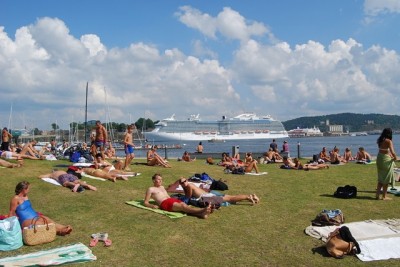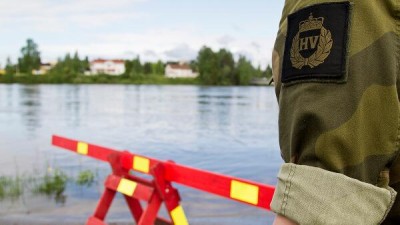Now it’s official: Norway experienced it warmest weather for more than 100 years in 2014, and state meteorologists are calling the high temperatures that were recorded from north to south “extreme.” They also think it will get warmer and warmer in the years ahead, making efforts to halt climate change more important than ever.

Temperatures in Norway were fully 2.23 degrees above what meteorologists consider “normal,” according to the state Meteorological Institute’s annual climate status report for last year. News bureau NTB reported that the last record from 2011 was exceeded by 0.4 degrees.
“This is extreme,” Hans Olav Hygen, a climate researcher at the institute, said at the presentation of the report this week. “It’s seldom we see such a big jump. 2014 was a very special year.”
It was indeed a year of extreme weather in many forms, from an unusual drought in winter and strong winds that fanned the flames of major fires, to unusually heavy and frequent rainstorms that caused flooding. Norway recorded its driest January for more than a century last year, followed by intense rain that set new precipitation records later in the year. Meteorologists’ concerns are also rising, from already-high levels.

“The increase in extreme weather and floods is tied to the rise in temperatures,” said another climate researcher, Reidun Gangstø. She called the weather last year part of “a trend with steadily higher temperatures, and we fear for more extreme weather-related problems because of this development.”
In Oslo, where it’s been raining instead of snowing for the past two days, the year is best remembered for a long, hot summer that began in May and extended well into October. Temperatures above 30C became almost common, uncomfortably warm in a city where few if any homes have air conditioning. Oslo was also the scene of record strong rainfall in June, while remarkable funnel clouds formed off the coast of southern Norway.
In Northern Norway, temperatures of over 30C were experienced in August for the first time, while the Arctic archipelago of Svalbard logged temperatures in February that were 14.5 degrees above normal. The summer was so warm in many parts of Northern Norway that sunbathers plunged into usually forbidding fjords and the Barents Sea to go swimming.
Winter sports nation under threat
NTB reported that climate researchers are predicting more rain and more intense rain, more floods and landslides and higher sea levels along the coast. They also predict that Norway’s future as a winter sports nation is in doubt. Snow depths have already all but disappeared in coastal areas and the “snow season” inland and at higher elevations is getting shorter every year, nationwide.
Lars Haltbrekken, leader of Norway’s chapter of Friends of the Earth (Naturvernforbundet), wasn’t surprised by their dire forecasts but said the compilation of Norway’s extreme weather last year made an impression.
“We’re a nation of people who love to go skiing,” he told NTB, quickly adding that far more important issues are at stake. “Now the politicians have to come forth with ambitious climate policies and act on them.” Haltbrekken and many others are also calling on politicians worldwide to finally agree on concrete measures at the next UN climate summit in Paris to reduce the emissions believed to cause climate change. Norway’s government is due to present new climate goals in February for the period after 2020, which are aimed at making Norway a low-emission country despite its oil and gas industry.
newsinenglish.no/Nina Berglund

